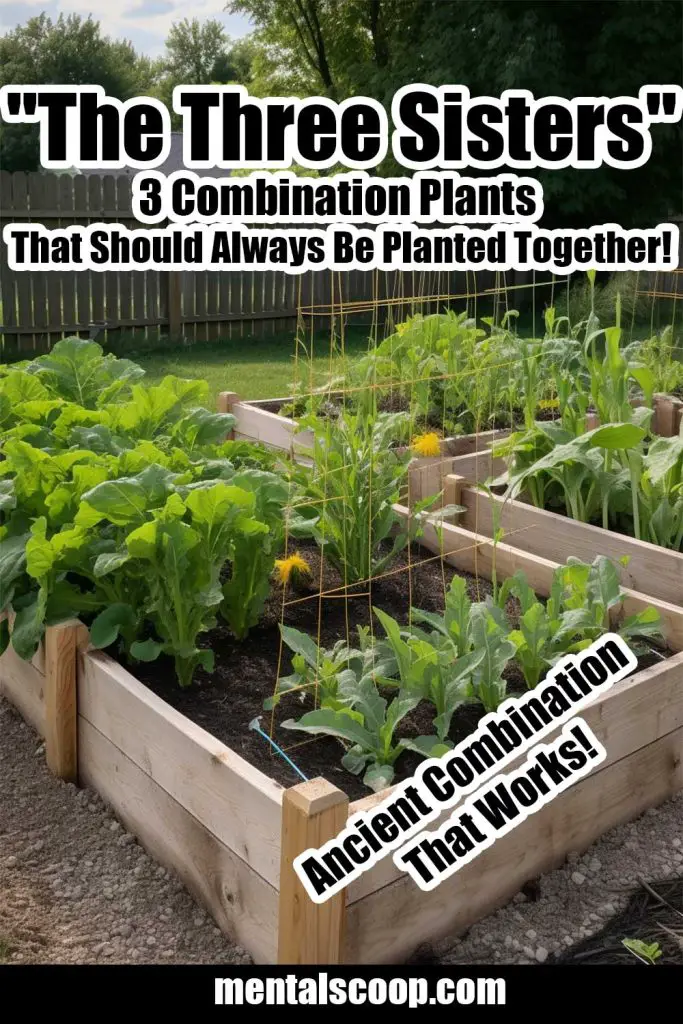
The Three Sisters planting combination is an ancient agricultural practice that has been used by Native Americans for centuries. The Three Sisters are corn, beans, and squash, which are planted together in a mutually beneficial arrangement. In this blog post, we will explore the history, benefits, and how-to of Three Sisters planting.
History of Three Sisters Planting
The Three Sisters planting technique was first used by Native American tribes in what is now known as the eastern United States. The Iroquois, Cherokee, and other tribes used this technique to grow crops in a sustainable way that provided food for their people while also preserving the land for future generations.
The Three Sisters are named for their unique relationship with one another. Corn provides a support structure for the beans to grow on, while beans add nitrogen to the soil to help the corn grow. Squash plants provide ground cover to suppress weeds and retain moisture in the soil.
Benefits of Three Sisters Planting
The Three Sisters planting combination offers several benefits:
Increased crop yield:
The Three Sisters planting technique allows for increased crop yield due to the mutually beneficial relationship between the plants. The beans provide nitrogen to the soil, which helps the corn grow, and the squash provides ground cover to retain moisture in the soil, which is beneficial for all three plants.
Pest control:
Squash plants act as a natural pest control by discouraging pests such as cucumber beetles and squash bugs. This reduces the need for harmful chemical pesticides.
Soil preservation:
The Three Sisters planting technique reduces soil erosion and improves soil health by increasing soil organic matter, which is essential for healthy plant growth.
Sustainability:
The Three Sisters planting technique is a sustainable agricultural practice that has been used for centuries. It provides food for people while also preserving the land for future generations.
How to Plant Three Sisters
To plant Three Sisters, follow these steps:
Prepare the soil:
Before planting, prepare the soil by removing any weeds and adding compost or organic matter.
Plant corn:
Plant corn seeds in mounds or rows, leaving a space of about 3 feet between each mound or row.
Wait for the corn to grow:
Wait for the corn to grow to a height of about 6 inches before planting the beans.
Plant beans:
Plant bean seeds around the base of each corn plant, about 2 inches away from the stem.
Wait for the beans to grow:
Wait for the beans to grow to a height of about 4 inches before planting the squash.
Plant squash:
Plant squash seeds in the spaces between the mounds or rows of corn, about 4 feet away from the corn.
Maintain the plants:
Water the plants regularly and keep the soil moist. Monitor the plants for pests and disease, and take appropriate action if necessary.
Overall
The Three Sisters planting combination is an ancient agricultural practice that offers several benefits, including increased crop yield, pest control, soil preservation, and sustainability.
By planting corn, beans, and squash together, farmers can grow crops in a sustainable way that provides food for people while also preserving the land for future generations. If you’re interested in sustainable agriculture, the Three Sisters planting technique is an excellent place to start.

More interesting articles you may be interested in reading:

How To Remove A Tree Stump Painlessly
10 Vital Home Maintenance Tasks You’ll Regret If You Forget
See How Much Propane Is Left In A Tank With No Gauge
Thanks for reading and be sure to share this info with your friends using the socia
Thanks for reading and be sure to share this info with your friends using the social share buttons below.
Talking about social stuff, consider liking our Facebook page to keep up to date with our articles. Check out our other articles for more mental scoops!
